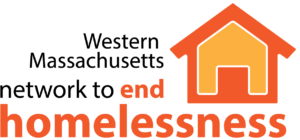HUD Releases Notice of Funding Availability (NOFA) for Rental Assistance for Non-Elderly Persons with Disabilities
On April 7, 2010 the U.S. Department of Housing and Urban Development (HUD) announced the availability of $30 million in funding for approximately 4,000 Section 8 Housing Choice Vouchers (HCV) for non-elderly disabled households. Funds unobligated under previous HUD NOFAs will also be made available as part of this NOFA, bringing the total funds available to $40 million for approximately 5,300 vouchers. Go to http://portal.hud.gov/portal/page/portal/HUD/program_offices/administration/grants/fundsavail/nednofa.pdf for a complete copy of the NOFA. Applications are due to HUD by July 7, 2010.
The NOFA includes 2 categories of funding:
- Category 1: Approximately $32.5 million ($22.5 million in FY09 funds and $10 million in unobligated funds from FY08 NOFAs) that will support an estimated 4,300 vouchers for non-elderly disabled households on a Public Housing Agency (PHA) waiting lists; and
- Category 2: Approximately $7.5 million that will support an estimated 1,000 vouchers to enable non-elderly households with disabilities to transition from nursing homes and other health care institutions into the community. These institutions could include intermediate care facilities and specialized institutions that care for people with mental retardation, developmental disabilities, or mental illness. The NOFA encourages PHAs applying for Category 2 funds to partner with state health and human service agencies and/or Medicaid agencies – including those states that administer a Medicaid Money Follows the Person (MFP) demonstration program – to identify eligible households and assist in meeting their support service needs as they transition from institutions into the community.
Eligible Applicants
PHAs currently administering a Section 8 HCV program are the only eligible applicants for this funding. In addition, the NOFA requires that, to be eligible to apply for funding, PHAs must also meet one of the following threshold experience criteria:
- At least 20 percent of the PHA’s HCVs are used by non-elderly disabled families; or
- The PHA operates a non-HCV program that serves non-elderly disabled families; or
- The PHA has previously awarded one of the following special purpose voucher allocations: Rental Assistance for Non-Elderly Persons with Disabilities in Support of Designated Housing Plans; Rental Assistance for Non-Elderly Persons with Disabilities related to Certain Types of Section-8 Project Based Developments; Mainstream Housing Opportunities for Persons with Disabilities Project Access Pilot Program
There are limits to the number of vouchers a PHA can apply for, based on the PHA’s authorized baseline units.
- PHAs with 2,000 or more authorized baseline units may apply for a maximum of 200 HCVs
- PHAs with 500-1,999 authorized baseline units may apply for maximum of 100 HCVs
- PHAs with less than 500 authorized baseline units may apply for a total of 50 HCVs
PHAs can apply for both categories, but total HCVs requested cannot exceed the maximum voucher request allowed, and must submit a separate application for each category. In addition, the NOFA states that for Category 2 applications, the number of vouchers requested by a PHA may not exceed the number of vouchers that the partnering service resource agency is projecting will be needed to assist transitioning individuals over a 12-month period.
Linkages to Supportive Services and Money Follow the Person
The NOFA requires that all PHA applicants (both Category 1 and 2) demonstrate resources for providing supportive services for non-elderly disabled families and include a detailed description of what these services are and how they will be delivered. HUD has developed a list of support service contacts in each state at http://www.hud.gov/offices/pih/programs/hcv/pwd/state-agency-contacts.pdf.
Applications for Category 2 must also identify a partnering agency that will provide support services and help identify the number of individuals to be transitioned in a 12-month period. These services must include the provision of care/case management, in addition to needed health and social services.
Currently, there are MFP demonstration grants in 29 states and the District of Columbia that provide these services to assist people – both elderly and non-elderly – as they move from nursing homes and institutions into the community. It is important to note that although MFP serves all transitioning individuals, these vouchers by law are specifically targeted to non-elderly (i.e., under age 62) people with disabilities.
For applicants located in states without MFP grants, the NOFA requires that PHAs partner with the relevant state health and human service and/or Medicaid agency for carrying out a state-sponsored institutional transitional program comparable to MFP that includes dedicated supportive services funded through the State Medicaid program and/or state appropriations. The application must identify the partnering agency and describe how individual referrals will be made to the PHA and the supportive services resources that will be made available to the transitioning individual.
Application Process
Applicants are required to submit applications through the online www.grants.gov system. According to the NOFA, before submitting an application, each PHA applicant must submit to their HUD Field Office an addendum to their Section 8 HCV Administrative Plan that outlines reasonable steps the applicant will take to affirmatively further fair housing in regards to these vouchers awarded through this NOFA. Reasonable steps must include informing affected applicants on how to file a fair housing complaint.
The NOFA also encourages PHA applicants to take the additional proactive steps in addressing accessibility problems for persons with disabilities as detailed in Section III(C)(2)(A)(2) of the NOFA.
Funding
According to the NOFA, all technically acceptable applications that meet the threshold criteria in the NOFA will be funded to the extent funds are available. If more approvable applications are submitted than funding available under this NOFA, HUD will conduct a national lottery to select applications for funding. If funding remains in either category, it will be used to fund the other category in lottery order.
For More Information
HUD has posted numerous resources available to interested PHA on their website at http://www.hud.gov/offices/pih/programs/hcv/pwd/ned.cfm.
In addition, TAC has developed in-depth comprehensive materials regarding this funding opportunity, which are available online at http://www.tacinc.org/Program_Policy/NonElderlyPWDNOFA.html.
TAC, and its partner Advocates for Human Potential, are also able to provide limited technical assistance to agencies interested in applying for this funding opportunity. To access this assistance, please go to http://www.tacinc.org/Program_Policy/NonElderlyPWDNOFA.html.

